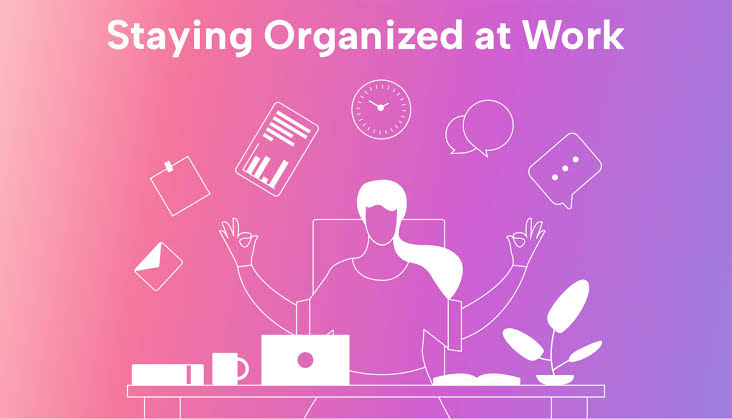By June 2025, virtual events are key to connecting people in many fields. Whether it is a company meeting, product reveal, training session, or global webinar, virtual events are flexible, scalable, and cost-effective. But with higher expectations and online fatigue, running a good event needs careful planning, strong tools, and engaging design.
This guide provides up-to-date, actionable tips to help you plan, promote, and execute virtual events that captivate audiences, deliver value, and drive results.
Define Clear Objectives and Audience
Start by defining the purpose of your event. Are you looking to educate, generate leads, raise brand awareness, or facilitate networking? Clarifying your goals helps shape every other decision, from platform selection to speaker lineup and post-event follow-up.
Also, identify your target audience. Understanding their interests, professional backgrounds, and preferred formats (e.g., live sessions, replays, Q&A forums) ensures your event resonates and keeps attendees engaged. A focused approach avoids content overload and improves attendee satisfaction.
Choose the Right Virtual Event Platform
In 2025, there are numerous virtual event platforms offering features like breakout rooms, real-time polling, multilingual support, AI-powered matchmaking, and immersive 3D environments. Top platforms include Hopin, Airmeet, Zoom Events, Microsoft Teams Live, and Webex Events.
When choosing a platform, consider scalability, ease of use, technical support, and compatibility with your branding. For large conferences, features like virtual lobbies, networking lounges, and sponsor booths enhance the attendee experience. Smaller events may benefit from lightweight, browser-based tools that require no downloads.
Create a Compelling Agenda
An engaging agenda is essential to hold your audience’s attention in a virtual setting. Plan a mix of keynote speeches, panel discussions, product demos, live Q&As, and interactive workshops. Keep sessions concise—20 to 30 minutes per speaker is ideal to avoid digital fatigue.
Incorporate breaks and networking slots to keep participants energized. Use an agenda builder or calendar integration that allows attendees to personalize their schedules and receive reminders, improving participation and retention throughout the event.
Focus on Speaker Preparation and Engagement
Virtual events require a different kind of stage presence. Select speakers who are not only knowledgeable but also comfortable presenting to a camera. Arrange technical rehearsals to test lighting, sound, internet stability, and screen sharing tools well before the event.
Encourage speakers to use visuals, storytelling, and interactive tools like polls or chat prompts to engage viewers. Eye contact with the camera and a lively tone help replicate the intimacy of in-person presentations and prevent attendees from zoning out.
Design Visually Appealing and Accessible Content
Your visual branding sets the tone for the event. Use custom graphics, branded backgrounds, consistent slide templates, and visually stimulating transitions to keep the experience professional and cohesive. Avoid cluttered slides or heavy text that can overwhelm virtual viewers.
Ensure accessibility by including live captions, screen reader compatibility, and adjustable font sizes. In 2025, inclusive design is not just a nice-to-have—it’s expected. Make sure your event can be enjoyed by attendees with varying needs and preferences.
Promote the Event Across Multiple Channels
Promotion is critical to your event’s success. Start early with a multichannel strategy that includes email marketing, social media campaigns, paid ads, and strategic partnerships. Use teaser videos, countdowns, speaker spotlights, and testimonials from previous attendees to generate interest.
Optimize your event registration page with SEO-friendly content, mobile responsiveness, and a clear call-to-action. Offering early-bird access or exclusive content can boost signups. Integration with platforms like Eventbrite or LinkedIn Events can also increase reach and credibility.
Encourage Real-Time Interaction
Interaction drives retention. Encourage live engagement through interactive chat, polls, emoji reactions, and Q&A sessions. Platforms with gamification features—such as leaderboards or virtual scavenger hunts—add an element of fun and competition.
Offer incentives like digital swag bags, raffles, or access to exclusive content to reward participation. In 2025, events that blend information with entertainment (infotainment) stand out and leave a stronger impression on attendees.
Ensure Technical Support and Contingency Plans
Even with the best preparation, technical issues can arise. Provide attendees with a tech FAQ page or virtual help desk. Assign a dedicated support team to handle login problems, audio issues, or navigation confusion in real time.
Have backup plans in place. Record all sessions in advance as a fallback. Maintain direct communication channels with presenters in case of emergency handoffs. Running a full dress rehearsal a few days before the event can help catch and fix potential problems early.
Collect Feedback and Analyze Metrics
Post-event evaluation is essential for improvement. Use post-event surveys, polls, and chat transcripts to gather attendee feedback. Ask about the quality of sessions, usability of the platform, and overall satisfaction. Keep the form short and incentivize responses when possible.
Leverage analytics tools built into your event platform to track attendance rates, session drop-offs, engagement levels, and replay views. This data provides insights for refining future events and demonstrating ROI to stakeholders or sponsors.
Extend Engagement After the Event
Your event doesn’t have to end when the stream goes offline. Share on-demand session recordings, create highlight reels, and repurpose content into blogs, social posts, or email newsletters. This not only extends your reach but also reinforces key messages.
Consider launching a post-event community using platforms like Slack, LinkedIn Groups, or Discord where attendees can continue networking and discussion. A follow-up campaign thanking attendees and offering future engagement opportunities keeps your brand top of mind.
Conclusion
Virtual events are more than just a pandemic-era solution—they’re now a vital part of the business and communication landscape. With proper planning, the right tools, and a strong understanding of your audience, online events can be just as engaging and impactful as in-person ones.
As of June 2025, success in virtual event planning depends on intentional design, authentic interaction, and adaptability. By focusing on value-driven content, seamless delivery, and post-event connection, you can host events that not only reach but resonate.



